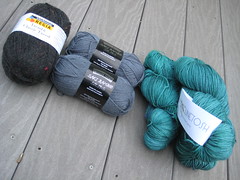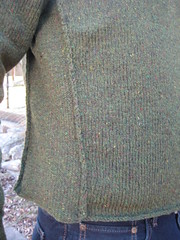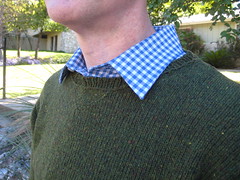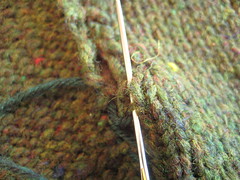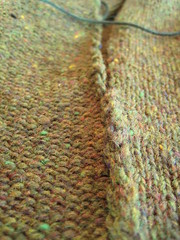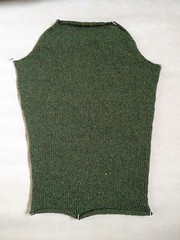Several of the crafty medical librarians at the conference I attended this week spent our last morning in Fort Worth visiting a few of the local yarn shops. Dena, an excellent knitter and hospital librarian was our host and skillfully guided us around a city that seems to have become one giant construction site.
We started out at Jennings St. Yarns, which I had visited a few summers ago. We were among the first customers on a drizzly day, and the shop owner, Linda, made all four of us feel right at home. A large portion of the shop is set up by yarn color, rather than just by brand, which makes it easy to make serendipitous finds. I really like this approach. There was still a separate sock yarn section, thou, and with a lot of variety. I found some that caught my eye.
Then we were off to Madtosh Crafts. Wow! It's a large, roomy shop that's half Madelinetosh yarn and half quilting fabric. I loved how the yarn cubby-holes were all waist high and up -- a tall person's yarn shop, indeed. I saw many examples of popular patterns knit up in Madeline Tosh yarns (including a Honey Cowl, Janelle!), and for a,guy who leans toward the drab and dreary, I still could have spent the whole day looking at all the rich, bright colors. I chose some beautiful sport weight Madelinetosh 80-10-10 in a seafoam green color for a Willow River shawl that I've been wanting to make.
I got back to Austin with just enough daylight left to snap a quick picture of the stuff I got. My thanks to Janna, Helen and Dena for a great morning. And to Dena especially for being such a good guide. Here's hoping everyone got home safely today and is knitting their new yarn up soon, if not already. I think I'll get started tomorrow. I'm itching to, because I realized I didn't manage to knit a stitch all week during the conference.


